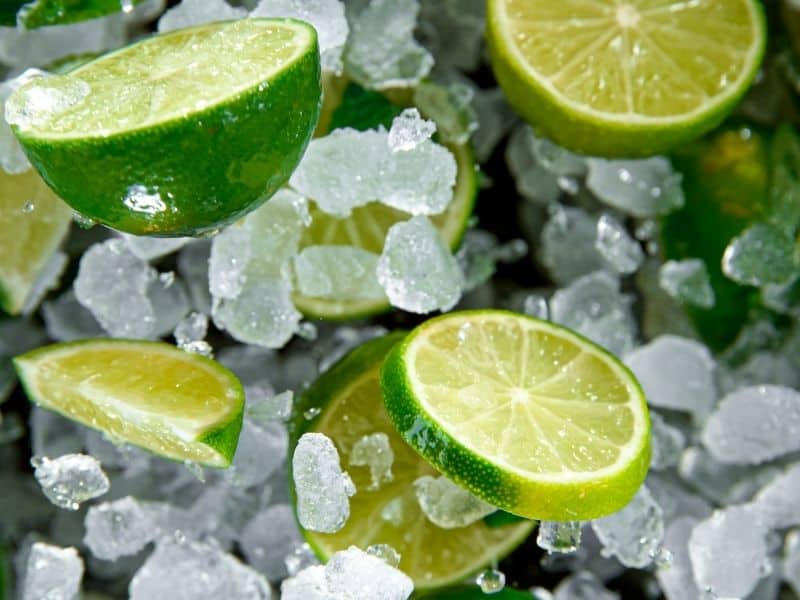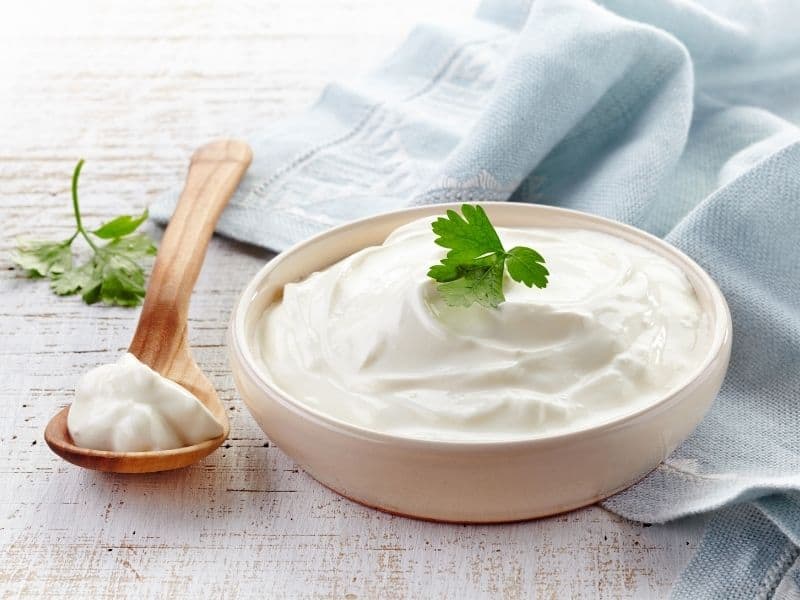There are many different types of blue foods: blue fruits and vegetables. For some reason when I think of blue foods I think of Willy Wonka and the chocolate factory LOL.
Blue foods are often high in antioxidants, which can help promote a good lifestyle. Many blue foods are also good sources of protein.
I have always heard the expression “Eat the rainbow” and I have embarked on a quest to try to eat every color food.
I have found that blue foods vary in color from light to dark blue and even purplish.
So next time you are shopping at your local super market, try to pick something blue to add diversity to your diet.
Here I will present you with a list of naturally blue foods including fruits, vegetables, algae, eatable flowers and proteins.

Benefits of Naturally Blue Foods
- Blue foods are high in antioxidants.
- Food with blue-hues are good sources of protein.
- Blue foods promote a good lifestyle.
- A high intake of blue foods may help some people sleep better at night.
How Do Blue Foods Get Their Color?
The natural color of many fruits and vegetables is influenced by the presence of anthocyanins. These are water-soluble vacuolar pigments that are usually red, purple, or blue. They are found in all parts of the plant, including the leaves, fruits, flowers, and stems.
Anthocyanins are a superfood because they offer antioxidant and anti-inflammatory properties.
Why Are There So Few Blue-Hued Foods?
Blue foods are not as common as other colors because the pigment that creates the blue color, anthocyanin, is not as stable as other colors.
This means that it can be more easily affected by light and heat, which can degrade the flavor and nutritional value of a food.
List of 19 Blue Foods that are Natural: Blue fruits and vegetables
Following is a list of several different types of foods that are blue with pictures, as well as the nutritional content of each.
1. Blueberries

Blueberries the first food you think of when you think of blue foods. They are a delicious type of fruit that is often associated with good health.
They are high in antioxidants, which can help promote a good lifestyle. These are one of the most well known blue foods.
Blueberries contain manganese, vitamin K and dietary fiber.
One serving of blueberries contains about 84 calories and is a good source of vitamin C and copper.
These fruits may help improve memory, stabilize blood sugar levels and improve cardiovascular health.
2. Navy Beans
Navy beans are a type of legume that is often used in soups and stews. These beans are high in fiber, protein and antioxidants.
They also contain important nutrients like potassium, magnesium and zinc.
Navy beans are an excellent source of thiamin, vitamin B6 and folate.
They can help improve heart health, regulate blood sugar levels and promote digestive health.
3. Blue cheeses

Blue cheeses are a variety of cheese that have been colored blue by the introduction of mold.
There are many different types of cheeses that can be classified as “blue”, but Roquefort is one example.
The color comes from the growth on the surface called Penicillium roqueforti which gives this type of cheese an intense flavor with notes like figs, nuts, honey, mushrooms and tobacco.
Some varieties may be aged for up to two years before they are ready to eat while others such as Gorgonzola Dolce require only about one month of aging.
Blue cheeses are high in calcium, protein, vitamin A and potassium.
They also contain important nutrients like riboflavin, folate and niacin. These are some of the best known blue foods.
4. Blackberries

Recently, more and more people have been turning to blackberries as an alternative to their favorite berry.
Blackberrys are a great way to get your daily dose of vitamin C, calcium, potassium and fiber.
They also contain anthocyanins which can help protect your brain from free radicals.
5. Elderberries
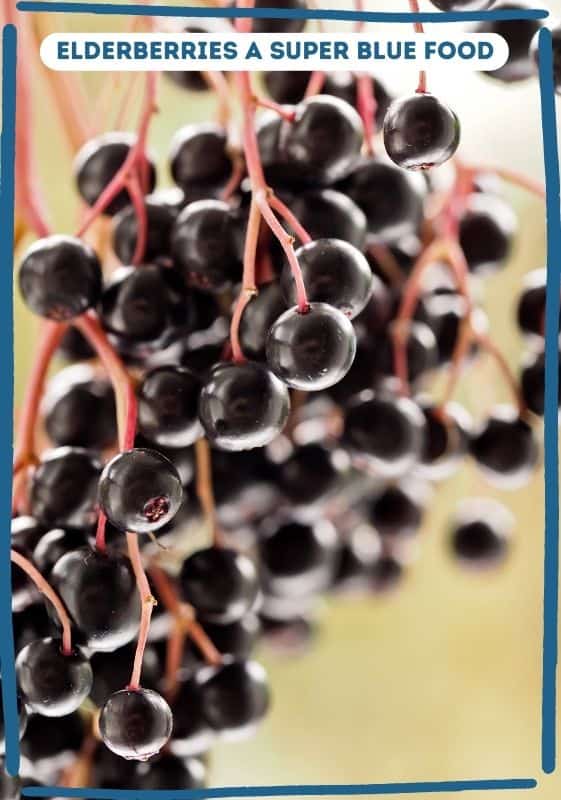
Elderberries are a type of berry that is often used for cooking.
These berries are native to Europe, but have been introduced to many other parts of the world.
Elderberries come in black or purple-blue colors. They are often used for jams, pies and wines.
The berries are high in vitamins A, B and C.
They can help improve heart health, fight against cancer-causing free radicals and promote great skin.
6. Concord grapes

There are many different types of grapes, but concord grapes are one of the most well known.
They are dark blue in color with a sweet taste. These juicy fruits can be eaten fresh or used in cooking.
Concord grapes are high in antioxidants, potassium and fiber.
They can help fight against cancer-causing free radicals, regulate blood sugar levels and promote good skin.
One serving has about 64 calories and is a good source of vitamin K, potassium and manganese.
Concord grapes also contain antioxidants that may help support brain health and improve your immune system.
7. Blue corn
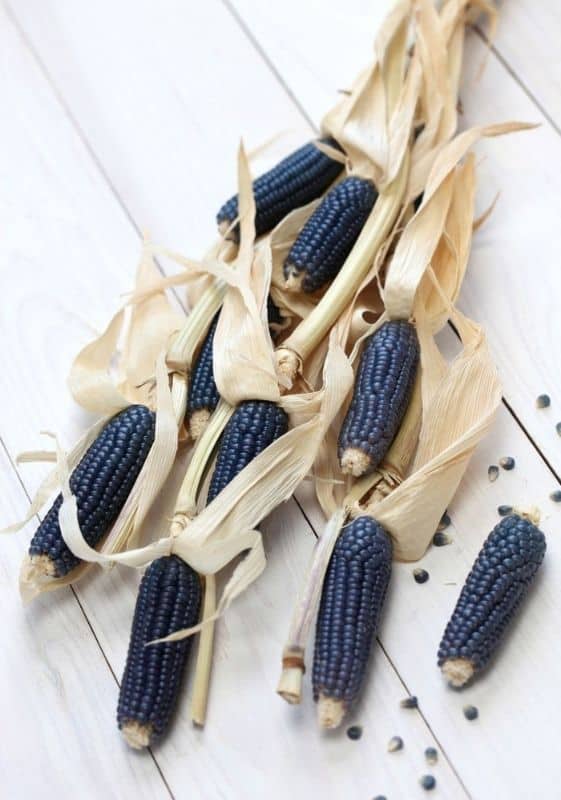
Blue corn is a type of corn that has been colored blue by the introduction of anthocyanins.
It is commonly found in Southwestern United States and may have originated from a Native American tribe called Tewa.
This type of corn contains high levels of antioxidants, potassium and dietary fiber.
It can help lower cholesterol levels, promote good and clear skin and protect your brain from free radicals.
Blue corn also contains important nutrients like vitamin C, calcium and riboflavin.
These are just some of the many different types of blue foods that you will find.
8. Blue potato
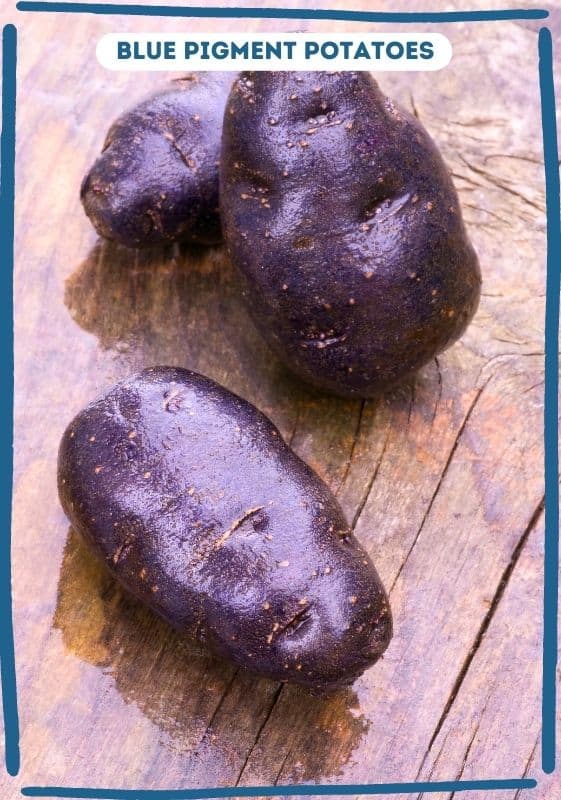
Blue potatoes are a type of potato that have been colored blue by the introduction of anthocyanins.
These potatoes were once used as a dye for fabrics and other materials. They can be found in various regions all over the world.
Blue potatoes contain important nutrients like vitamin C, calcium and riboflavin, contains high levels of antioxidants, potassium and dietary fiber.
One serving of Blue Potatoes contains about 86 calories.
9. Blue lobster

Blue lobsters, or Homarus americanus, make up about 1% of all lobsters caught in Maine.
They are not only beautiful to look at but they taste great too! Blue Lobsters have a sweeter flavor and meatier texture than other lobster varieties.
The blue color of the lobster is due to the presence of a pigment called astaxanthin.
This pigment is also responsible for the red color of salmon and other fish.
One serving of Blue Lobsters has about 7 grams of protein, 30mg of calcium, 529 mg of potassium and contains less sodium than regular lobster.
10. Blue tomatoes

Tomatoes are a popular fruit that come in many different colors, including blue. There are many different types of blue tomatoes, including the Blueberry Tomato and the Indigo Rose Tomato.
The blue hue in the blue tomato comes from antioxidants in the plant called anthocyanins. These give many fruits, including blueberries and eggplants, their purple to blue color.
The Blue Tomato has a very unique flavor. It does not have the sweet taste that other tomatoes may have, and it is described as being a bit tart. This variety of tomato is a cultivar of the ever popular cherry tomato.
One serving of Blue Tomatoes has about 15 grams of carbohydrates, 2 grams of protein, 20% of the recommended daily value of vitamin C, and 10% of the recommended daily value of calcium.
11. Blue crab

The blue crab is a type of crab that can be found in many different regions all over the world. It gets its name from the blue color of its claws and legs.
This type of crab is very popular for its sweet and tender meat. It can be eaten cooked or raw and is often used in seafood dishes.
Blue crabs are a good source of protein, omega-3 fatty acids, selenium and vitamin B12. They also contain antioxidants that can help protect your body from disease.
One serving of Blue Crabs has about 24 grams of protein, 671mg of omega-3 fatty acids, 21 micrograms of selenium and 226% of the recommended daily value of vitamin B12.
12. Damson plums

Damson plums are a type of plum that is small and dark blue in color. They are often used in jams, pies and other desserts.
Damson plums are a good source of vitamin A, vitamin C and dietary fiber. They also contain antioxidants that can help protect your body from disease.
One serving of Damson Plums has about 28 grams of carbohydrates, 2 grams of protein, 20% of the recommended daily value of vitamin A, and 10% of the recommended daily value for calcium.
13. Okinawan sweet potato
Okinawan Sweet potatoes are a type of potato that is native to the tropical island of Okinawa, Japan. They have a sweet taste and a smooth texture and are blue in color.
This blue sweet potato contain important nutrients like vitamin C, calcium and riboflavin, contains high levels of antioxidants which can help protect your body from disease.
One serving of Okinawan Sweet Potatoes has about 86 calories.
14. Indigo mushroom

The indigo mushroom, or Inocybe azurea, is a type of mushroom that can be found in many different regions all over the world. It gets its name from the blue color of its cap and stem.
This type of mushroom is very popular for its sweet and tender meat. It can be eaten cooked or raw and is often used in seafood dishes.
The indigo mushroom contains important nutrients like vitamin C, potassium and dietary fiber. It also contains antioxidants that can help protect your body from disease.
One serving of Indigo mushrooms has about 2 grams of protein, 20% of the recommended daily value of vitamin C, and 10% of the recommended daily value for calcium.
15. Blue carrots

Blue carrots are a new variety of carrot that has been recently developed. They get their blue color from anthocyanins. Blue carrots are not yet widely available, but they are starting to become more popular.
Blue carrots are a colorful variety of carrot that has a slightly sweet and earthy flavor. They are available at specialty stores and farmers markets.
One serving of blue hue carrots has about 40 calories, 4 grams of carbohydrates and 2 grams of protein.
16. Blue caviar

One of the most expensive types of caviar in the world is blue.
It’s called “Osetra” or “Royal” caviar, and it can be found in many different regions all over the world.
This type of caviar has a very sweet taste to it, which comes from its high levels of fat content. It also has an extremely smooth texture when eaten raw or cooked.
Blue Caviar is often served with ice cubes on top so that the cold temperature helps preserve its freshness for as long as possible!
One serving of Osetra or Royal Caviar has about 10 calories.
17. Lingcod fish
Lingcod fish are a type of saltwater fish that can be found in the Pacific Ocean. They have a blue-green coloration and a white underbelly. Lingcod are a popular food fish and can be eaten baked, broiled, or fried.
Most people describe the taste of lingcod fish as mild and delicate.
One serving has over 30 grams of protein and 20% of the daily recommended amount of selenium. It is also an excellent source for Vitamin B12, Vitamin D, and niacin.
18. Haskap
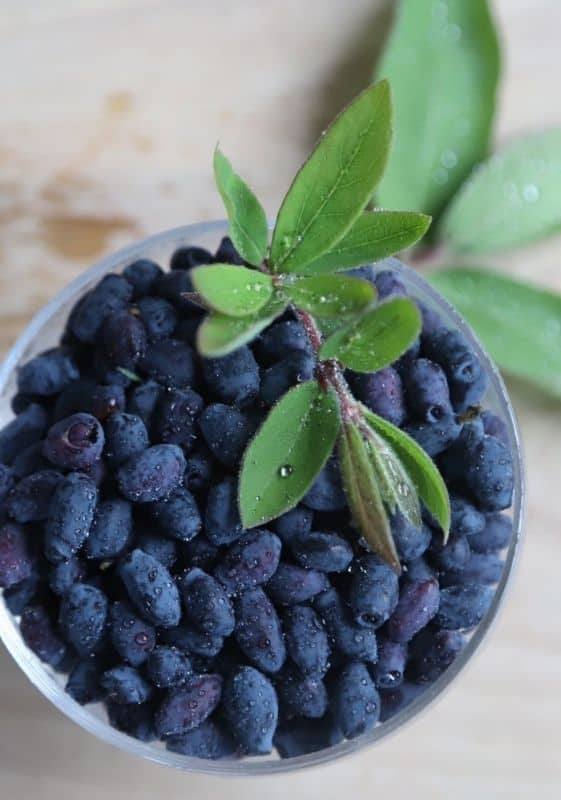
Haskap is a type of berry that’s native to Canada and blue in color! Haskap berries are small, sweet and juicy. They’re the perfect food for people who love berries because they have about 200% more vitamin C than an orange does!
Haskaps also contain high levels of antioxidants which can help protect your body from disease.
One serving has 20 calories, 3 grams of carbs and 1 gram of protein.
19. Blue shrimp

Blue shrimp are a type of shrimp that are found in the Pacific Ocean. They get their blue color from the pigment that they produce called “astaxanthin.”
Blue shrimp are a popular food item and can be eaten cooked or raw. They have a mild and delicate flavor that most people enjoy.
One serving of blue hue shrimp has about 80 calories and 8 grams of protein
Conclusion
We always known about yellow foods, red foods, orange foods. But what about blue foods?
Blue foods can be found in many different types of food and even seafood.
Next time you are at the market give blue foods a try!


